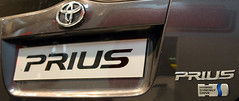Business Week ran a column on a mortgage interest deduction rule that piqued my interest. The interesting parts:
In general, the IRS lets you deduct 100% of the interest you pay on one or more home mortgages, up to a total loan value of $1 million. But when you refinance and withdraw cash, the rules change: Only the interest on your original mortgage balance, plus an additional $100,000, qualifies for a deduction. (If you want to take out more cash, use a home-equity loan or line of credit. The law allows a separate deduction for interest on borrowings of up to $100,000.)
[...]
Here's how the refi tax trap works. Let's say you borrowed $500,000 at 8% in 1998 to buy your house. By 2003, the house had appreciated substantially and the mortgage balance had been whittled down to $450,000. Then you refinanced, taking a new loan of $650,000 at 6%. At tax time, Form 1098 would show that you forked over about $39,000 in interest on the $650,000 mortgage in 2003.
[...]
If you use that $39,000 figure to calculate your annual mortgage interest deduction and you're in the 33% marginal tax bracket, you would wind up taking $1,980 more in deductions than you're entitled to, according to William Lazor, a CPA at Kronick Kalada Berdy in Kingston, Pa. That's because you may take a deduction on a mortgage of only $550,000—the $450,000 left on the original loan plus $100,000. On $550,000, the interest paid would be $33,000, says Lazor.
I did some further looking into this by reading
IRS Publication 936. It says that any secured debt that's used to refinance home acquisition debt is treated as home acquisition debt. However, the new debt will qualify as home acquisition debt only up to the amount of the balance of the old mortgage principal just before the refinancing. Any additional debt is not home acquisition debt, but may qualify as home equity debt.
My reading of this publication is that in the example from the article, the $450,000 is the home acquisition debt, and the $100,000 is the home equity debt ($100,000 is the maximum home equity debt you can deduct interest on). I'm a little confused on the first paragraph I quoted, where it implies that the $100,000 in the refinance PLUS a separate $100,000 in another home equity loan can both have their interest expenses deducted. I'll try to contact the author for clarification.
Update:
I was able to get in touch with the article author, and she graciously replied to me. She says that the explanation given in the article was confirmed with several tax experts. I'll continue to research this to prove it to myself.



